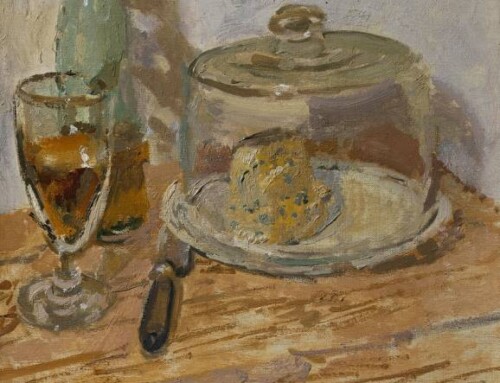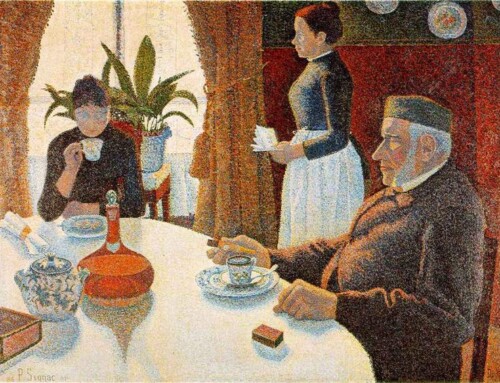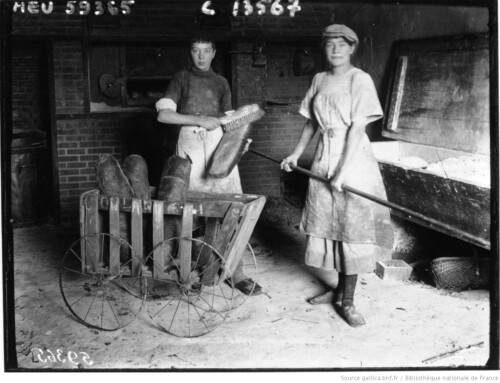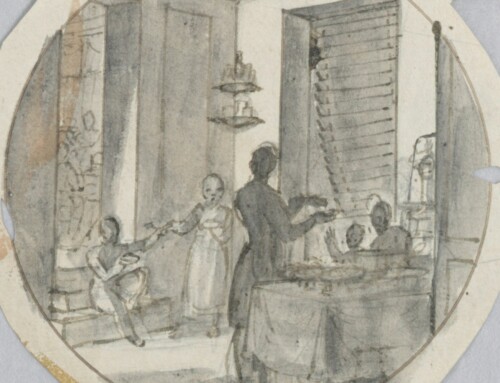Château Tour Saint-Pierre was renamed Château Lapin d’Or. Château Larteau was renamed Château Lapin Impérial. Château Senilhac was renamed Château Antilope Tibétaine. Château Clos Bel-Air was renamed Château Grande Antilope. These wine estates in the Gironde department of France were bought in 2016-2017 by the Hong Kong entrepreneur Chi Keung Tong, the renaming happened soon after, and then came a range of reactions, which led to a lot of ink being spilled. The matter (or non-matter) is still generating talk— see for example the article “Vin de Bordeaux : Juppé rétorque avec humour aux attaques de Philippe Sollers” (18 février 2019) in Les Echos and the article “As Chinese Buy French Vineyards, Names Like Château Imperial Rabbit Rattle Purists” (April 6, 2019) in The New York Times. And yet it is still possible to find a different tack to take.
Is naming a wine estate or its château after an animal really all that unheard of in France? Of course not. In Gironde, the well-known Château Cheval Blanc traces its roots to the sixteenth century, and documents from the seventeenth century show it being referred to as “Au Cheval-Blanc.” In the Loire Valley, Château du Hureau dates from the eighteenth century, has thirteenth-century wine caves, and is named after a wild boar. In the southern Rhône region, Château de la Font du loup was built near a spring where wolves came to drink.
Is it to be assumed that a French owner of a winery has nothing to do with antelopes? Of course not. In British Columbia, the tenth-generation winemaker Olivier Combret had actually changed the name of his site from Domaine de Combret Estate Winery to Antelope Ridge Estate Winery in 2006.
Continuing to travel outside of France, one comes across Vignoble Le Chat Botté in Québec, its owners inspired by the moral “L’industrie et le savoir-faire / Valent mieux que des biens acquis” from the fairy tale “Le Maistre chat, ou le Chat botté” (1697) by Charles Perrault (1628-1703). Another winery also created in twenty-first century Québec and named after a lovely creature is Vignoble La Grenouille.
In the town of Franschhoek, South Africa, where Huguenots first arrived in the seventeenth century, there is a company called Black Elephant Vintners that was formed by Kevin Swart, Raymond Ndlovu, and Jacques Wentzel in 2013. Would a French traditionalist mindset be able to accept such a name? The convention of using the surnames of the owners (Swart, Ndlovu) is observed, yes, but ndlovu is also the word for elephant in several southern African languages! And what kind of a reaction would there be upon finding out that this company has a 2017 Sauvignon Blanc named “Two Dogs, A Peacock & A Horse”?!
Beyond the French and Francophone worlds, one comes across names currently in use such as:
- 2Hawk Vineyard & Winery (USA)
- Elk Cove Vineyards (USA)
- Screaming Eagle Winery and Vineyards (USA)
- Stag’s Leap Winery (USA)
- Working Dog Winery (USA)
- Martinsthaler Wildsau (Germany)
- Black Widow Winery (Canada)
- Long Dog Winery (Canada)
- Fishbone Wines (Australia)
- Yellow Tail Winery (Australia)
If a Tibetan antelope and an imperial rabbit seem too strange to be yoked with myopic notions of “patrimoine,” then something else to consider might be the non-French surnames attached to several wine estates in Gironde:
- Château Kirwan (named circa 1740; formerly La Terre Noble de la Salle and Domaine Ganet)
- Château Smith Haut Lafitte (named in the mid-18th century; formerly the estate of Verrier du Boscq)
- Château Lynch-Bages (named after 1749; formerly half of the Domaine de Bages)
- Château Lynch-Moussas (named after 1749; formerly half of the Domaine de Bages)
- Château Clarke (named after 1771; formerly Les Granges)
- Château Brown (renamed in the late 18th century; formerly Château Barrière)
- Château Palmer (renamed in the early 1800s; formerly Château de Gascq)
- Château Langoa-Barton (renamed in the 19th century; formerly Château Pontet Langlois)
- Château Léoville-Barton (named in the 19th century, though there is no actual château; formerly part of the Léoville-Las-Cases estate)
- Château Cantenac-Brown (renamed in the 1840s; formerly Château Cantenac)
- Château Mouton Rothschild (renamed in 1853; formerly Château Brane-Mouton)
- Château Prieuré-Lichine (renamed since the mid-1900s; formerly Château Prieuré)
- Château Mauvesin Barton (renamed since the 2011 vintage; formerly Château Mauvesin)
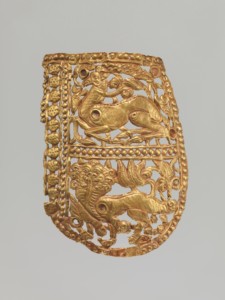
Clothing Plaque with Antelope and Tiger. 7th-9th century, China (Xinjiang Autonomous Region, Central Asia). The Metropolitan Museum of Art. → https://www.metmuseum.org/art/collection/search/65314?&searchField=All&sortBy=Relevance&ft=antelope+china&offset=0&rpp=20&pos=2
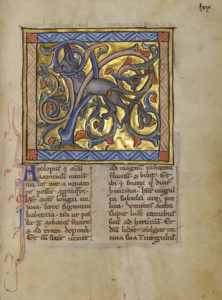
An Antelope with its Horns Entangled in a Bush. Franco-Flemish culture. Thérouanne?, France (formerly Flanders). Circa 1270. Tempera colors, gold leaf, and ink on parchment. Digital image courtesy of the Getty’s Open Content Program. → https://www.getty.edu/art/collection/objects/4793/unknown-maker-an-antelope-with-its-horns-entangled-in-a-bush-franco-flemish-about-1270/
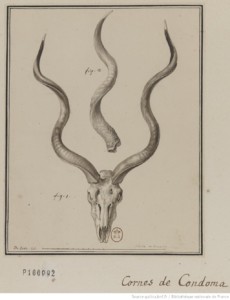
Jacques de Sève (1742-1788). Cornes de Condoma. Antilope. Dessin pour : Histoire naturelle générale et particulière / par M. de Buffon. A Paris, de l’imprimerie royale, 1764 Éd. in-4, T. XII, Pl. XXXIX, p. 340. Bibliothèque nationale de France. → https://catalogue.bnf.fr/ark:/12148/cb44296240g
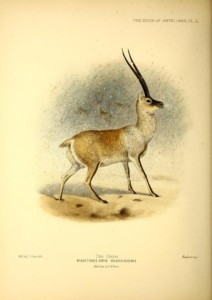
The Chiru (Pantholops hodgsoni), page 44. The Book of Antelopes, Volume III (1897-1898) by Philip Lutley Sclater (1829-1913). Image via Internet Archive. → https://archive.org/details/bookofantelopes318942scla/page/n61
▀▄▀▄▀▄
References & Suggested Reading
Anson, Jane. “Barton family buys new Bordeaux estate.” Decanter, 30 September 2011. → https://www.decanter.com/wine-news/barton-family-buys-new-estate-34788/
– – – . “Should Bordeaux châteaux change their names?” Decanter, 4 April 2019. → https://www.decanter.com/wine-news/opinion/news-blogs-anson/bordeaux-chateaux-names-411077/
Berkowitz, Natalie. The Winemaker’s Hand: Conversations on Talent, Technique, and Terroir. Columbia University Press, 2014.
Bremner, Charles. “Chinese châteaux names uncork row over wine heritage.” The Times, 8 February 2019. → https://www.thetimes.co.uk/article/chinese-ch-teaux-names-uncork-row-over-wine-heritage-0cmtpsx6n
Carcenac, Paul. “Château lapin impérial ou antilope tibétaine… Ces domaines viticoles rebaptisés à la chinoise.” Le Figaro, 26 février 2019. → https://www.lefigaro.fr/conjoncture/2019/02/26/20002-20190226ARTFIG00002-chateau-lapin-imperial-ou-antilope-tibetaine-ces-domaines-viticoles-renommes-a-la-chinoise.php
“Chateaux’ lucky Chinese names are not to all tastes.” The Connexion: French News and Views, 27 February 2019. → https://www.connexionfrance.com/French-news/Chinese-owners-renaming-their-Bordeaux-wine-chateaux-with-lucky-symbols
Clarke de Dromantin, Patrick. “ ‘Le Vol des Oies Sauvages’ ou l’immigration en France des Irlandais Jacobites.” In: Études irlandaises, n°14-2, 1989. pp. 123-133. DOI : https://doi.org/10.3406/irlan.1989.2550
Coates, Clive. The Wines of Bordeaux: Vintages and Tasting Notes, 1952-2003. Univ of California Press, 2004.
“Des Châteaux de Bordeaux renommés en Châteaux Lapin Impérial…” Sempervino, 7 mars 2019. → https://sempervino.fr/des-chateaux-de-bordeaux-renommes-en-chateaux-lapin-imperial/
Duperron, Audrey. “ ‘Château Lapin Impérial’ : les vénérables châteaux du Bordelais rebaptisés à la chinoise, au grand dam des locaux.” Express, 10 avril 2019. → https://fr.express.live/chateaux-vins-bordelais-noms-chinois/
Ferrer, Béatrice. “Antilope Tibétaine, Lapin Impérial, les nouveaux noms des vieux châteaux.” Le Résistant, 20 novembre 2017. → www.leresistant.fr/2017/11/20/antilope-tibetaine-lapin-imperial-nouveaux-noms-vieux-chateaux/
Fiévez, Patrick. “Ne dites plus Château Larteau mais Château Lapin Impérial.” L’Echo, 8 mars 2019. → https://www.lecho.be/economie-politique/europe/general/ne-dites-plus-chateau-larteau-mais-chateau-lapin-imperial/10105588.html
Frankopan, Peter. The New Silk Roads: The Present and Future of the World. Knopf, 2019.
Galiacy, Jean-Charles. “Vins de Bordeaux : ‘Lapin Impérial’, de plus en plus de noms chinois pour les châteaux.” Sud Ouest, 23 novembre 2017. → https://www.sudouest.fr/2017/11/23/chateaux-sauce-chinoise-3971659-2738.php
Herman, Sandrine, and Julien Pascal. Mouton Rothschild: The Museum of Wine in Art. Paris: Imprimerie nationale, 2003.
Lawther, James, and Hugh Johnson. The Finest Wines of Bordeaux: A Regional Guide to the Best Châteaux and Their Wines. Univ of California Press, 2010.
Lemaire, Laurence. “Château Senilhac est chinois : et de 5 pour Chi Keung Tong.” L’Hebdo, le Vin, la Chine, 3 janvier 2018. → https://www.hebdovinchine.com/chateau-senilhac-est-chinois-5-pour-chi-tong/
McNeice, Angus. “Chinese owner of French vineyards causes stir with renaming.” China Daily, 30 November 2017. → www.chinadaily.com.cn/business/2017-11/30/content_35127234.htm
Nossiter, Adam. “As Chinese Buy French Vineyards, Names Like Château Imperial Rabbit Rattle Purists.” The New York Times, 6 April 2019. → https://www.nytimes.com/2019/04/06/world/europe/france-china-wine.html?searchResultPosition=3
“Philippe Sollers planh que de vins de Bordèu pòrten de noms chineses.” Jornalet, 9 febrièr 2019. → https://www.jornalet.com/mobil/index.php?uri=los-vins-de-bordeu-cambian-de-noms
Piot, Joséphine. “Lapin impérial ou Antilope Tibétaine les nouveaux noms des vins de Bordeaux.” Le Petit Ballon, 26 février 2019. → https://www.lepetitballon.com/blog/vins_de_bordeaux_rebaptises.html
Prolongeau, Hubert. “Vins de Bordeaux, une passion chinoise.” Le Monde, 26 janvier 2019. → https://www.lemonde.fr/m-le-mag/article/2019/01/26/vins-de-bordeaux-une-passion-chinoise_5414817_4500055.html
Robinson, Jancis, and Julia Harding, eds. The Oxford Companion to Wine. Oxford University Press, 2015.
Rosas, Paula. “China, el ‘terroir’ del vino francés.” Hoy, 29 abril 2019. → https://www.hoy.es/sociedad/china-terroir-vino-20190428002155-ntvo.html
Rouet, Hugo. “Connaissez-vous ces fameux vins de Bordeaux : Lapin Impérial et Grande Antilope ?” La Lettre Patriote. → https://lalettrepatriote.com/connaissez-vous-ces-fameux-vins-de-bordeaux-lapin-imperial-et-grande-antilope/
Van Steenberghe, Etienne. Belgian Winegrowers in France. Lannoo Uitgeverij, 2000.
“Vignoble bordelais vendu à la Chine : à quand le Château Pékin ?” Boulevard voltaire : la liberté guide nos pas, 18 février 2019. → https://www.bvoltaire.fr/vignoble-bordelais-vendu-a-la-chine-a-quand-le-chateau-pekin/
“Vin de Bordeaux : Juppé rétorque avec humour aux attaques de Philippe Sollers.” Les Echos, 18 février 2019. → https://www.lesechos.fr/pme-regions/nouvelle-aquitaine/vin-de-bordeaux-juppe-retorque-avec-humour-aux-attaques-de-philippe-sollers-965188
Vine, Richard. The Curious World of Wine: Facts, Legends, and Lore About the Drink We Love So Much. Penguin, 2012.
Wang, Natalie. “Bordeaux wary of rich Chinese changing estates’ names.” The Drinks Business, 30 November 2017. → https://www.thedrinksbusiness.com/2017/11/bordeaux-wary-of-rich-chinese-changing-estates-names/
